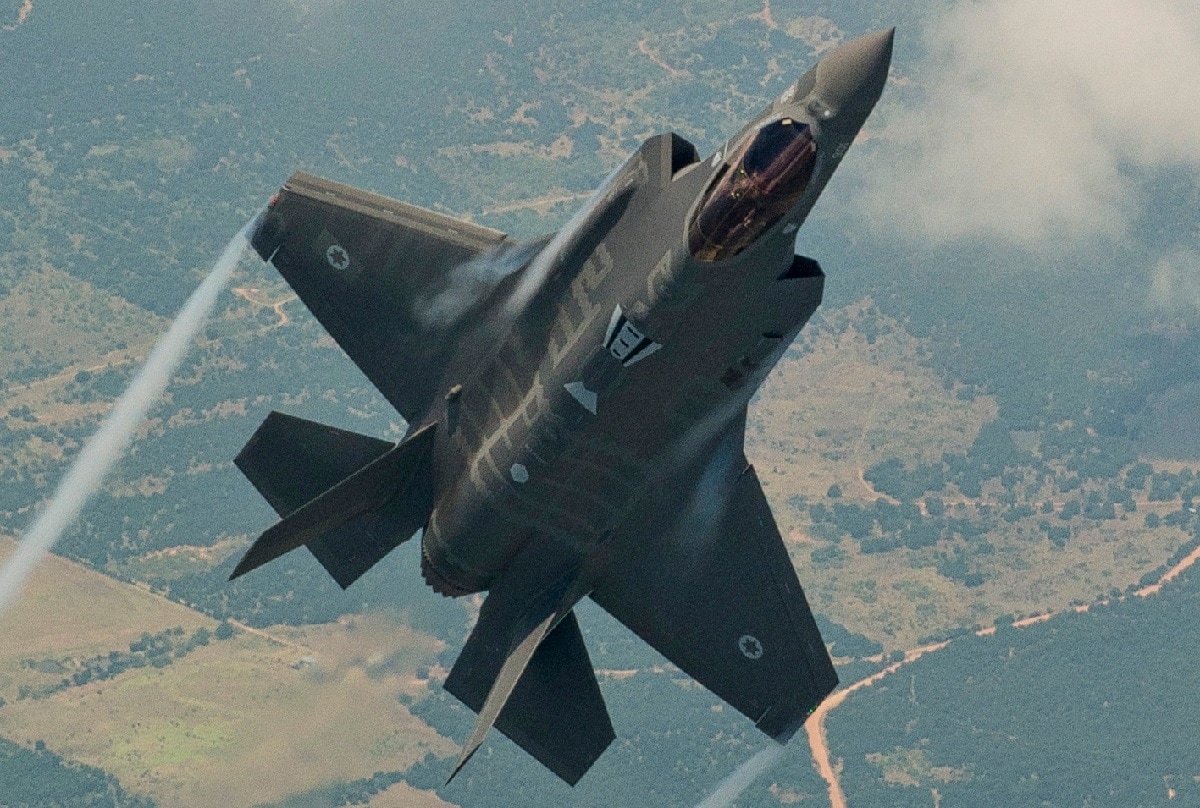Why the F-35 Rules – Thanks to Israel: When Israeli Defense Forces revealed in March that their F-35I Adir fighter jets last year successfully intercepted two Iranian unmanned aerial vehicles launched toward Israel, the announcement came with a remarkable video. The IDF published footage of the March 2021 incident on Twitter. The video showed a drone being engaged, from the perspective of an F-35I. It marked the first time an F-35 fifth-generation fighter has been confirmed as having destroyed an airborne threat. In fact, the video was the first public display of an F-35 involved in this type of aerial engagement in any way.
The Times of Israel reported that the drones were transporting firearms to terror groups like Hamas and the Palestinian Islamic Jihad in Gaza. Iran has increasingly turned to drone use in recent years to support its proxy groups’ attacks in the region. Equipped with lethal and sophisticated drones, the Islamic Revolutionary Guard Corps itself has also ramped up missile barrages targeting its adversaries. In addition to them, Hezbollah, Houthi rebels in Yemen, the Iran-backed Popular Mobilization Units in Iraq, and Iran-affiliated groups in Syria have employed a range of projectiles, including explosives-laden UAVs, in their operations.
Looking for Head Shots
Iran’s drone threat has grown into a major concern for Israel and its regional allies. Last month, Israel reportedly began working with Saudi Arabia and the United Arab Emirates to coordinate a joint air defense effort to better thwart drones launched by Iran. While Israel possesses the sophisticated Iron Dome missile defense system, it is still vulnerable to Iran-affiliated drone attacks. This February, the Dome failed to intercept a small UAV launched from its northern border. Hezbollah, the “Party of God,” claimed responsibility for the attack, stating its Hassan model drone was “on a reconnaissance mission that reached 70 kilometers inside Israeli territory.”
As the drone attacks have increased, so have IDF operations targeting IRGC assets. In March, hundreds of drones were destroyed in an aerial attack in Iran. While the IDF has taken out Iranian assets in Lebanon, Iraq, and Syria in the past, airstrikes on Iranian territory are not typical. However, Israeli Prime Minister Naftali Bennett recently pledged to implement a so-called Octopus Doctrine in the country’s struggle with Tehran. The prime minister asserted that, “We no longer play with the tentacles, with Iran’s proxies. We’ve created a new equation by going for the head.”
F-35 Long Range Missions
Since 2017, there has been an uptick in Israel’s efforts to counter Iran in Syria. Situated between Iraq and Lebanon, Syria is frequently used by the IRGC to smuggle weapons to Hezbollah and its other affiliates. Last month, the IDF launched a series of airstrikes targeting Iranian weapons shipments to Hezbollah at Damascus International Airport. As described by Syrian journalist Ibrahim Hamidi in the Associated Press, Israel was sending the message that it “won’t let Iran fill the vacuum (left by) Russia in Syria while it is busy with Ukraine.”
In its March reveal on Twitter, the IDF said that its aircraft engaged the incoming drones far beyond the country’s airspace. According to The Jerusalem Post, two Shahed 197 drones were destroyed. “One drone, flying toward Israel from the South, was spotted at around 1:44 a.m. and was shot down at 2:19 a.m. The second one, which was flying in from the East, was identified at 1:46 a.m. and downed at 2:16 a.m.” While the IDF did not identify where exactly the drones were taken out, the ability of its F-35I Adir fleet to perform longer-range missions is now evident.
Following the announcement, Israeli Minister of Defense Benny Gantz said, “We must reiterate the warning that Iranian aggression, whether it emanates from Iranian territory or through Iranian proxies — is a threat to global peace and to regional stability, as well as a threat to the state of Israel.” According to The Drive, this incident suggests the Israeli Air Force (IAF) perhaps is more willing to use its arsenal of fifth-generation stealth fighters for aerial engagements and taking out ground targets. Evoking the “Octopus Doctrine,” Israeli operations in Iran or nearby can be more realistic thanks to the F-35I.
Maya Carlin is a Middle East Defense Editor with 19FortyFive. She is also an analyst with the Center for Security Policy and a former Anna Sobol Levy Fellow at IDC Herzliya in Israel. She has by-lines in many publications, including The National Interest, Jerusalem Post, and Times of Israel.

